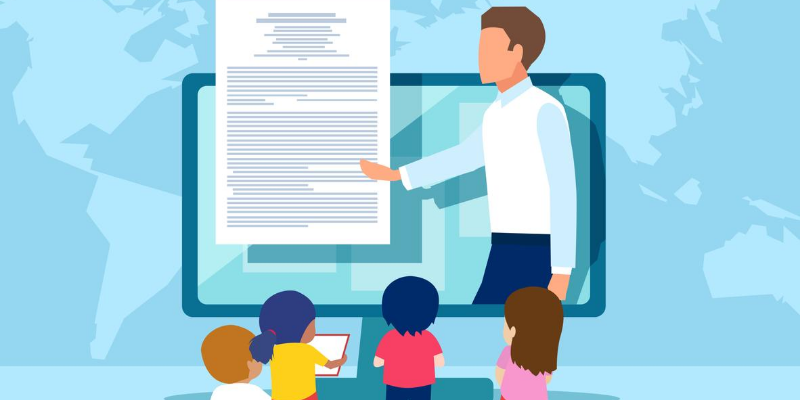
E-learning is revolutionising our education system as it remains the only option during the ongoing crisis. Internet of Things (IoT) is playing a bigger role in schools every day and holds tremendous potential in terms of creating smarter and more connected schools.
Much has been written about digital classrooms and how schools are transforming from chalk-and-talk to click-and-learn.
One of the earliest studies in this context was done jointly by Google and KPMG, in which they had projected that the market for online education in India would be around $2 billion, with 9.6 million paying subscribers by 2021.
That was fine, until the outbreak of COVID-19. Today, we are looking at a crunching of time, with expectations that these numbers would be reached well before 2021.
So what has changed when the school system is concerned? Let us explore some obvious changes.
The advent of digital technology
E-learning supports a better-connected and more collaborative future for education. Smart classrooms are not only transforming education in private schools, but it is also rapidly making inroads in government schools as well.
With scholars, politicians, and academicians supporting the need for reinventing our education system, schools are now becoming technologically advanced and equipped with new-age tools and techniques. This gives students better access to learning materials, communication channels and also enables the teachers to measure student learning progress in real-time.
The pandemic that forced the shutdown of schools has accelerated digital adoption by educational institutions across the country. Schools have switched to online courses and e-learning platforms are temporarily offering free classes to help parents and students during school closures. What happens to be a great inconvenience for many, the pandemic has created a spike in demand and popularity of e-learning.
Many schools are leveraging the crisis as an opportunity to deploy digital technology and make education delivery meaningful, to be more productive and efficient while developing new skills through online learning and assessment. The IoT enabled transformation from teacher-centric education to student-centric education is reinventing education in our country.
Efficient management
Automating routine tasks or day-to-day school operations saves time and efforts and helps academicians focus more on imparting knowledge, rather than indulging in mundane tasks.
For example, the digital attendance system eliminates the need for taking attendance manually. Similarly, digitisation helps track students' performance and also, track school resources such as projectors and lab equipment.
Concrete learning
When students and teachers are unable to access physical school infrastructure, e-learning is helping them with academic instruction as usual.
In many cases, blended learning has proven to be more beneficial than traditional learning as advanced technologies like augmented and virtual reality, adaptive learning, analytics, etc., facilitate educators to integrate real-world experiences in teaching modules and analytics-based intervention to impart concrete learning to students.
Interactive sessions
E-learning provisions students to interact with teachers and fellow students and also, define their speed of learning. The delivery cycles are quick, lessons start quickly, and also wrap up in a single learning session and there is no peer pressure anymore.
Trackable performance
In online classes, it is very easy for teachers to track every student's performance, learning ability and assessment. Moreover, the analytics tools provide detailed reports of every student's progress, which helps the teachers to design teaching modules according to the learning patterns of students.
Summing it all up
The rapid influx of technology in the education system amidst the crisis might give rise to a new era wherein the students will have access to the best of faculty from across the globe.
It is expected that e-learning will leave a lasting impact on the way education is delivered in schools. There will be an increased focus on the quality of faculty and IT infrastructure and the need for faculty to be familiar with digital teaching methodologies.
(Edited by Saheli Sen Gupta)
(Disclaimer: The views and opinions expressed in this article are those of the author and do not necessarily reflect the views of YourStory.)
Want to make your startup journey smooth? YS Education brings a comprehensive Funding Course, where you also get a chance to pitch your business plan to top investors. Click here to know more.
Link : https://yourstory.com/2020/07/schooling-post-pandemic-reality-elearning-trends
Author :- Saiju Aravind ( )
August 03, 2020 at 02:36PM
YourStory

